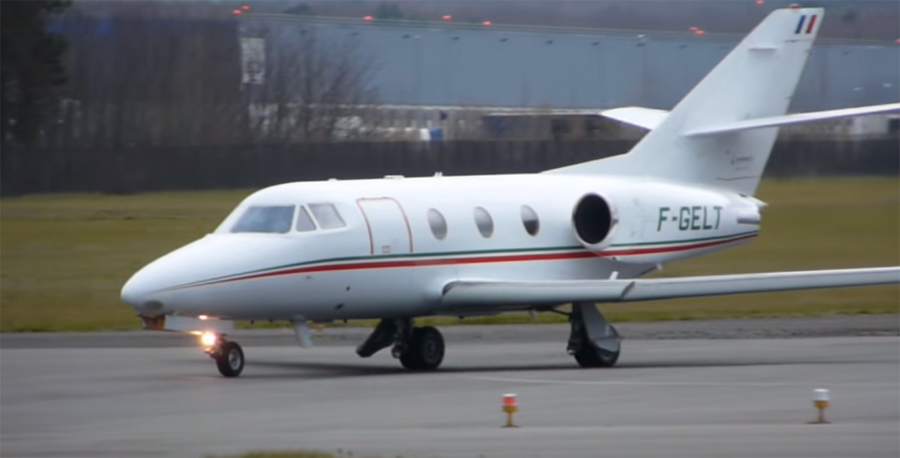Why this private jet is a champion of private flights:
Because is still very popular today, having made its maiden flight in 1971, almost 50 years ago. If we compare with a car, it’s as if a Ford Escort or a Reanault 5 were still popular nowadays.
The Dassault Falcon 10-100 is a lightweight business jet. It was developed by the then company Breguet, which merged with Dassault and is now known under the name Dassault Aviation.
Production began in 1971 and ceased in 1989, but it remains a popular business jet on the second hand and private jet rental market.
By 2018, Falcon 10s from the 1970s were priced at $300,000 to $600,000.
In June 1969, the development of the aircraft, which is a scaled down version of the Dassault Falcon 20 announced. The maiden flight of the first prototype (F-WFAL) took place on 1 December 1970 still with General Electric CJ610-6 engines. The first flight showed significant deficiencies and the engine had to be redesigned. The setting angle, the V-position and the sweep of the wings have been changed. The flight tests were then resumed on 7 May 1971. On June 1, 1971 succeeded in a class world record over the closed 1000-km track with 930.7 km / h. The second prototype (F-WTAL) followed on October 15, 1971, already with the series engines TFE 731-2, which followed a third prototype on October 14, 1972. This third machine also achieved a class world record over the closed 2000 km course with 917.02 km / h, flown on May 29, 1973.
The first custumer was the business jets division of Pan American World Airways with an order for 40 machines. The first production aircraft flew on April 30, 1973 for the first time. The French approval was granted on September 11, 1973, the FAA approval followed on September 20, 1973. The delivery of the first series machines took place from 1 November 1973.
The Falcon 10 was manufactured in three versions. The Falcon 10 A can accommodate up to seven passengers and is recognizable by the three side windows in the fuselage. The Falcon 10 B can hold up to nine passengers. A military version, produced in seven copies, for the French Navy was named Falcon 10MER. From mid-1980, the upgraded model Falcon 100 was delivered with an EFIS glass cockpit, higher takeoff weight, a fourth cabin window on the right and a larger luggage space.
It is powered by two Garrett Ai-Research TFE 731-2 turboshaft engines, each with 1,465 pounds static thrust. The maximum cruising speed is 920 km / h at an altitude of 9150 meters. The four-passenger range is 3,940 kilometers plus a 45-minute reserve, with seven passengers at 3,200 kilometers.
The aircraft is 13.08 meters long and 4.61 meters high, the wingspan is 13.08 meters, the wing area 24.1 square meters. The empty weight of the Falcon 10 is 4,480 kg, the maximum takeoff weight at 8,300 kg. The Falcon 100 weighs 5.055 kg unloaded, loaded maximum 8.755 kg. The crew consists of two pilots. [1]
The French Air Force and Navy still operate several Falcon 10s as fast liaison aircraft today.


